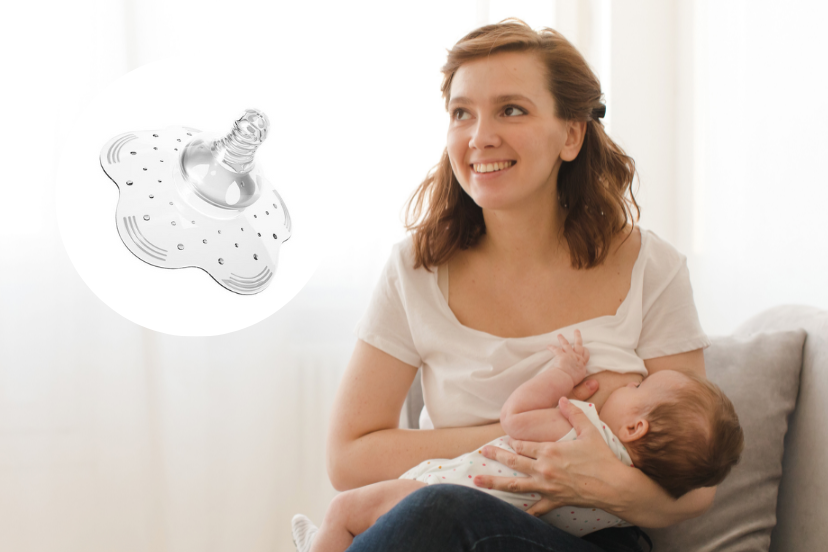Using a Nipple Shield for Inverted Nipples: Your Ultimate Guide
If you’re dealing with inverted nipples, you might be wondering how to address this common concern. Fortunately, one solution to consider is using a nipple shield. In this comprehensive guide, we’ll explore the ins and outs of using a nipple shield for inverted nipples, so you can make an informed decision about whether it’s the right choice for you.
Introduction: Unveiling the World of Nipple Shields
Inverted nipples, while not often discussed openly, can cause discomfort and self-consciousness for many individuals. A nipple shield can be a valuable tool in addressing this issue. Let’s dive into the details, benefits, and challenges of using a nipple shield for inverted nipples.
What is a Nipple Shield?
A nipple shield is a thin, flexible silicone or latex cover designed to fit over your nipple. It is used to draw out inverted or flat nipples during breastfeeding. Here’s a breakdown of its primary components:
Components of a Nipple Shield
- Material: Typically made from silicone or latex, nipple shields are soft and pliable, ensuring comfort for both you and your baby.
- Shape: They are circular in shape, with a small opening in the center, allowing for your baby’s latch.
- Size: Nipple shields come in various sizes, so you can choose one that best fits your nipple and your baby’s mouth.
How Does a Nipple Shield Work?
Understanding how a nipple shield works is crucial before using it for inverted nipples. Here’s a step-by-step guide on its usage:
Using a Nipple Shield for Inverted Nipples
- Cleanliness First: Ensure your hands and the nipple shield are clean and sterile to prevent any infections.
- Position It Right: Gently squeeze the base of the shield to create a suction effect, then place it over your nipple.
- Latch On: Encourage your baby to latch onto the nipple shield.
- Feeding as Usual: Once your baby is latched on, breastfeeding proceeds as usual, providing essential nutrition and bonding time.
The Pros and Cons of Using a Nipple Shield
Like any solution, using a nipple shield has its advantages and disadvantages. Let’s explore these aspects to help you weigh your options.
Benefits of Using a Nipple Shield
- Aid for Inverted Nipples: Nipple shields can help draw out inverted nipples, making breastfeeding more accessible for both you and your baby.
- Reduced Pain: Using a nipple shield may alleviate some of the pain associated with breastfeeding.
- Protection: It can act as a protective barrier, shielding your nipples from excessive friction.
Drawbacks of Using a Nipple Shield
- Reduced Milk Supply: Some mothers may experience a decrease in milk supply when using a nipple shield for an extended period.
- Baby’s Frustration: Babies may initially find it challenging to latch onto the shield, leading to frustration.
- Potential Dependency: There’s a risk of your baby becoming dependent on the nipple shield, making it challenging to transition to regular breastfeeding.
FAQs: Addressing Your Concerns
Let’s answer some frequently asked questions about using a nipple shield for inverted nipples.
FAQ 1: Can Anyone Use a Nipple Shield?
Yes, nipple shields are generally safe for use by mothers with inverted or flat nipples. Consult a lactation consultant or healthcare professional for guidance tailored to your situation.
FAQ 2: How Do I Clean a Nipple Shield?
Cleaning is crucial. After each use, wash the shield with mild soap and warm water, then sterilize it according to the manufacturer’s instructions.
FAQ 3: When Should I Consider Using a Nipple Shield?
If you’re struggling with inverted nipples or experiencing pain during breastfeeding, consider using a nipple shield after consulting with a healthcare professional.
FAQ 4: Can Nipple Shields Impact My Baby’s Oral Development?
Extended use of nipple shields may affect oral development, so it’s important to work on transitioning back to regular breastfeeding as soon as possible.
FAQ 5: How Can I Wean My Baby Off a Nipple Shield?
Gradual weaning is the key. Try removing the shield once your baby is comfortably latched and use techniques like skin-to-skin contact to encourage direct breastfeeding.
FAQ 6: Are All Nipple Shields the Same?
No, there are different sizes and shapes available. Consult with a lactation consultant to find the one that suits you and your baby best.
Conclusion: Empowering Your Breastfeeding Journey
In the world of inverted nipples, using a nipple shield can be a game-changer. However, it’s important to remember that while it offers benefits, it should be used with guidance and in moderation. Always consult with healthcare professionals and lactation consultants to ensure you and your baby’s health and well-being during your breastfeeding journey.
So, if you’re dealing with inverted nipples and considering a nipple shield, now you have the knowledge you need to make an informed decision. Remember, it’s not just about feeding your baby; it’s also about nurturing the beautiful bond you share. Embrace the possibilities, consult with experts, and make the choice that’s right for you.
By using a nipple shield for inverted nipples, you can transform potential challenges into moments of connection and joy, creating a memorable journey for you and your little one.




